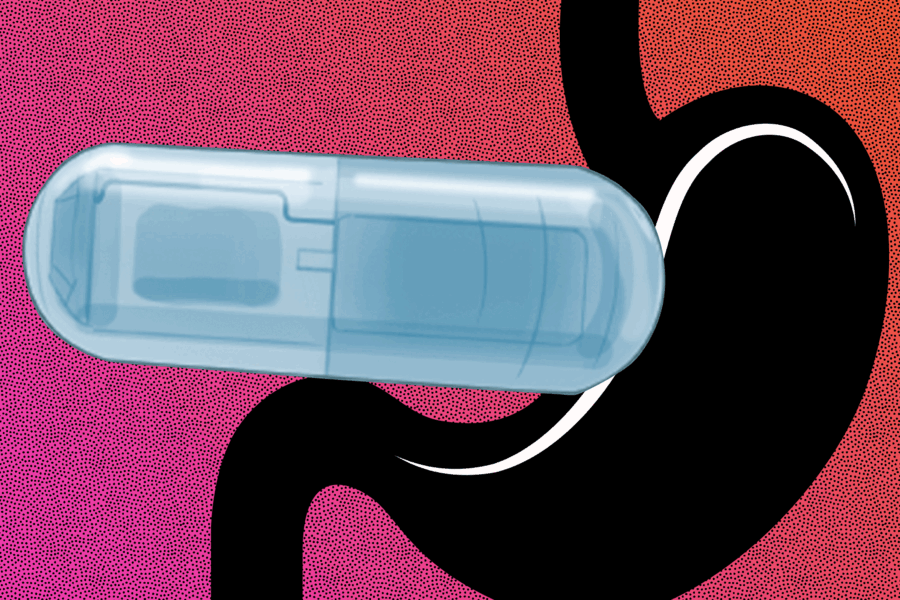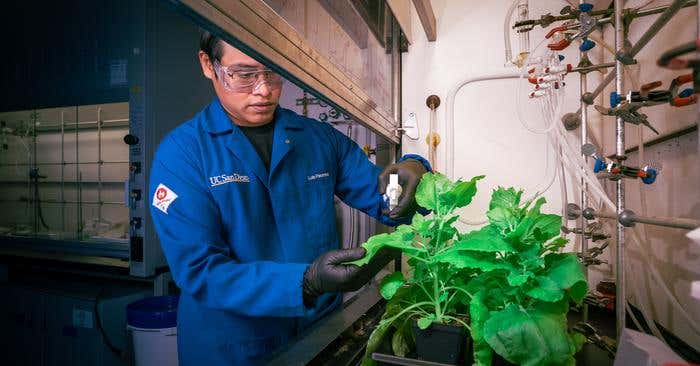Scientists develop easy-to-swallow capsule to combat obesity
When you eat a substantial meal, signals are sent from your stomach to your brain, letting you know that you’re full.

MIT engineers designed an ingestible capsule that vibrates within the stomach, creating an illusory sense of fullness and reducing appetite. The pill could offer a minimally invasive, cost-effective way to treat obesity. (CREDIT: MIT News)
Have you ever wondered why a glass of water before a meal can help control your appetite? The answer lies in the intricate relationship between your stomach and your brain. When you eat a substantial meal, signals are sent from your stomach to your brain, letting you know that you're full. Remarkably, this communication can also occur when your stomach is filled with liquid, such as water, which is why dieters are often advised to drink water before eating.
In an exciting development, engineers at the Massachusetts Institute of Technology (MIT) have devised a groundbreaking solution to harness this phenomenon. They've created an ingestible capsule that vibrates within the stomach, triggering the same stretch receptors responsible for sensing stomach distension. This ingenious technology creates an illusion of fullness, potentially revolutionizing the fight against obesity.
The Power of the Vibrating Capsule
MIT's innovative capsule, which initiates vibrations within the stomach, could hold the key to curbing overeating and promoting weight loss. In experiments conducted on animals, this vibrating pill, ingested 20 minutes before a meal, not only stimulated the release of hormones signaling satiety but also reduced food intake by a staggering 40 percent.
Related Stories
While there is still much to learn about the complexities of human body weight regulation, this remarkable technology, if deemed safe for human use through further research, could offer a minimally invasive approach to combat obesity.
Shriya Srinivasan, a former MIT graduate student who is now an assistant professor of bioengineering at Harvard University and the lead author of the study, remarked, "For somebody who wants to lose weight or control their appetite, it could be taken before each meal. This could be really interesting in that it would provide an option that could minimize the side effects that we see with the other pharmacological treatments out there."
The study, published in Science Advances, delves into the fascinating science behind this innovative approach. When the stomach stretches due to food intake, specialized cells known as mechanoreceptors sense this expansion and transmit signals to the brain via the vagus nerve. This signaling prompts the brain to produce various hormones, including insulin, C-peptide, Pyy, and GLP-1, which collectively aid in digestion, create a feeling of fullness, and discourage further eating. Simultaneously, levels of ghrelin, a hormone that promotes hunger, decrease.
MIT's innovative capsule, which initiates vibrations within the stomach, could hold the key to curbing overeating and promoting weight loss. (CREDIT: Shriya Srinivasan, Giovanni Traverso, MIT News)
Srinivasan's curiosity about artificially stimulating these stretch receptors through vibration led to this groundbreaking research. Earlier studies had shown that applying vibration to a muscle can induce a perception of greater stretching than actually occurred.
To put their innovative concept into practice, Srinivasan, Giovanni Traverso, an associate professor of mechanical engineering at MIT, and their team designed a capsule similar in size to a multivitamin. This capsule contains a vibrating element powered by a small silver oxide battery. Upon reaching the stomach, the acidic gastric fluids dissolve a gelatinous membrane covering the capsule, completing an electronic circuit that activates the vibrating motor.
VIBES concept and mechanism. The Vibrating Ingestible BioElectronic Stimulator (VIBES) makes contact with the gastric lining and activates following contact with gastric fluid. Vibrations activate intraganglionic laminar endings (IGLEs) in the celiac plexus, signaling distension to the NTS, which interacts with hunger circuitry to signal illusory distension. (CREDIT: Science Advances)
The researchers observed the effects of the vibrating capsule in animals, tracking hormone levels during the periods of vibration. Astonishingly, these hormone levels mirrored those seen after a meal, even when the animals had not eaten. When the vibrating capsule was activated for approximately 20 minutes before the animals were offered food, they consumed 40 percent less, on average, compared to when the capsule was not activated. Additionally, the animals gained weight at a slower rate during the periods when they received treatment with the vibrating capsule.
Traverso noted, "The behavioral change is profound, and that's using the endogenous system rather than any exogenous therapeutic. We have the potential to overcome some of the challenges and costs associated with delivery of biologic drugs by modulating the enteric nervous system."
VIBES neuromodulation of gastric vagal afferents yields illusory metabolic satiety. Experimental schematic for blood sampling during Vibrating Ingestible BioElectronic Stimulator (VIBES) stimulation between 30 and 60 min. (CREDIT: Science Advances)
Currently, the capsule is designed to vibrate for approximately 30 minutes after entering the stomach. However, the researchers are exploring the feasibility of extending its duration in the stomach and enabling wireless on-and-off control. In animal trials, the capsules passed through the digestive tract within four or five days without causing any obstructions, perforations, or other adverse effects.
The vibrating capsule developed by MIT engineers presents a promising alternative to existing approaches for tackling obesity. Nonmedical interventions like diet and exercise are not always effective, while many medical interventions are invasive and costly. Surgical procedures like gastric bypass and gastric balloons have their drawbacks, including safety concerns. Injectable weight loss drugs like GLP-1 agonists, though effective, are unaffordable for many individuals.
VIBES effect on feeding and weight gain. Percentage of meal consumed by swine in the Vibrating Ingestible BioElectronic Stimulator (VIBES), percutaneous endoscopic gastrostomy (PEG)–control, and Control groups. (CREDIT: Science Advances)
Srinivasan emphasized, "For a lot of populations, some of the more effective therapies for obesity are very costly. At scale, our device could be manufactured at a pretty cost-effective price point. I'd love to see how this would transform care and therapy for people in global health settings who may not have access to some of the more sophisticated or expensive options that are available today."
As we await further developments in this exciting field of research, the vibrating capsule offers a glimpse into the potential for innovative, non-invasive solutions to address one of the world's most pressing health challenges: obesity.
For more science and technology stories check out our New Innovations section at The Brighter Side of News.
Note: Materials provided above by The Brighter Side of News. Content may be edited for style and length.
Like these kind of feel good stories? Get the Brighter Side of News' newsletter.



